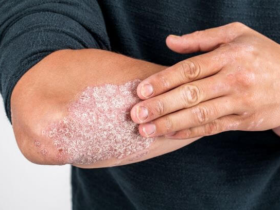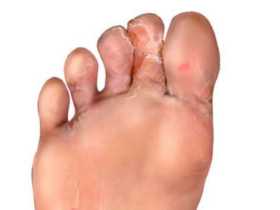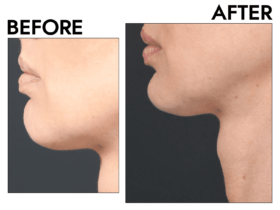Beef tallow, once a staple in kitchens, is now gaining popularity in skincare. The resurgence of this traditional ingredient has prompted questions about its efficacy and safety. Dermatologists, skincare enthusiasts, and natural product advocates are all weighing in on this trending topic. This article delves into the benefits, potential drawbacks, and expert opinions on using beef fat for the skin.
The Historical Use of Beef Tallow in Skincare
Beef tallow, rendered fat from cattle, has a long history of use in various cultures. Before the advent of modern skincare products, fat was a common ingredient in soaps, creams, and balms. Its use dates back centuries, with people appreciating its moisturizing properties. The fat was prized for creating a protective barrier on the skin, shielding it from harsh weather conditions and retaining moisture.

Composition and Benefits of Beef Tallow
Beef tallow is composed primarily of triglycerides, fatty acid esters of glycerol. It contains a mix of saturated and unsaturated fats, including oleic acid, palmitic acid, and stearic acid. These components play a significant role in skin health:
- Oleic Acid: A monounsaturated fat that makes up about 47% of beef tallow. It is known for its anti-inflammatory properties and ability to penetrate deeply into the skin, providing long-lasting hydration.
- Palmitic Acid: A saturated fat comprising around 26% of beef tallow. It has emollient properties, helping to soften and smooth the skin.
- Stearic Acid: About 19% of beef tallow contains this saturated fat, which helps strengthen the skin barrier, protect against environmental damage, and reduce water loss.
Dermatologists’ Perspectives on Beef Tallow
Dermatologists have mixed opinions on the use of beef tallow in skincare. Some experts advocate for its use, citing its natural origin and compatibility with human skin—others, however, caution against potential drawbacks.
Proponents’ Viewpoint
Supporters of beef tallow argue that its composition closely resembles the sebum produced by human skin. This similarity means it can be highly effective in moisturizing and repairing the skin. Dr Sarah Thompson, a dermatologist specializing in natural skincare, states, “Beef tallow’s fatty acid profile is remarkably similar to that of our skin’s natural oils, making it an excellent moisturizer that can restore skin balance and improve barrier function.”
Critics’ Concerns
On the other hand, some dermatologists raise concerns about the potential for comedogenicity, which is the likelihood of an ingredient clogging pores. Dr. Michael Roberts, a dermatologist focusing on acne treatment, notes, “While beef fat can be beneficial for dry or mature skin, it may not be suitable for acne-prone individuals. The high-fat content could potentially exacerbate acne by clogging pores.”
Uses and Applications in Skincare
Beef tallow can be used in various forms in skincare routines. It is commonly found in balms, lotions, and soaps. Here are some popular applications:
- Moisturizing Balm: Tallow can be a primary ingredient in moisturizing balms. It can create a deeply hydrating product suitable for dry and flaky skin when mixed with essential oils and other natural ingredients.
- Cleansing Soap: Traditional tallow-based soaps are known for their rich lather and moisturizing properties. These soaps can be beneficial for those with dry skin or eczema.
- Anti-Aging Cream: Beef fat, high in vitamins A, D, E, and K, can be incorporated into anti-aging creams to promote skin regeneration and reduce the appearance of fine lines and wrinkles.

Potential Drawbacks and Considerations
Despite its benefits, there are several considerations to consider when using beef tallow for skin.
Ethical and Environmental Concerns
One of the primary concerns with using beef tallow is its source. The production of beef tallow is intrinsically linked to the meat industry, which has significant ethical and environmental implications. Animal welfare advocates argue against using animal-derived products in skincare, promoting plant-based alternatives instead. Additionally, the environmental impact of cattle farming, including greenhouse gas emissions and deforestation, is a major consideration for eco-conscious consumers.
Allergy and Sensitivity Issues
Although rare, some individuals may have allergies or sensitivities to beef tallow. Performing a patch test before incorporating a new product into your skincare routine is always recommended. Applying a small amount of the product to a discreet skin area and monitoring for adverse reactions can help prevent potential issues.

DIY Beef Tallow Skincare Recipes
For those interested in trying beef tallow in their skincare routine, creating homemade products can be a rewarding experience. Here are two simple recipes:
Tallow Balm
Ingredients:
- 1 cup beef tallow
- 2 tablespoons olive oil
- 10 drops lavender essential oil (optional)
Instructions:
- Gently melt the beef tallow in a double boiler.
- Once melted, remove from heat and stir in the olive oil.
- Add the essential oil if using, and mix thoroughly.
- Pour the mixture into a clean, sterilized jar and let it solidify at room temperature.
- Use the balm as a moisturizer for dry patches, elbows, or heels.
Tallow Soap
Ingredients:
- 1 pound beef tallow
- 4.5 ounces lye (sodium hydroxide)
- 10 ounces distilled water
- 2 ounces coconut oil
- 1 ounce castor oil
- Essential oils for fragrance (optional)
Instructions:
- Carefully add the lye to the distilled water (never the other way around) and stir until dissolved. Let it cool.
- Melt the beef tallow and coconut oil in a double boiler.
- Combine the melted fats with the lye solution, stirring continuously until it reaches a thick, pudding-like consistency (trace).
- Stir in the castor oil and any essential oils.
- Pour the mixture into soap molds and let it harden for 24-48 hours.
- Remove from molds and let the soap cure for 4-6 weeks before use.

Conclusion: Is Beef Tallow Right for Your Skin?
The use of beef tallow for skin in skincare elicits varied opinions. It’s natural composition, and historical use suggests that it can be a valuable addition to a skincare regimen, particularly for dry or mature skin. However, ethical, environmental, and potential comedogenic concerns must be considered.
Dermatologists recommend a personalized approach: understanding your skin type, conducting patch tests, and considering ethical implications before incorporating beef tallow into your routine. As with any skincare product, what works for one person may not work for another, so listening to your skin and adjusting is essential.
Also, Read the following: Hyper independence.
















Got a Questions?
Find us on Socials or Contact us and we’ll get back to you as soon as possible.